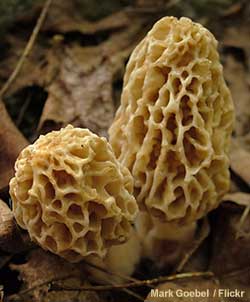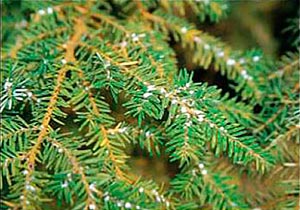A recent outbreak of the pest within the state has prompted new legislation which will restrict the movement of hemlock products within Michigan in an effort to control this invasive pest.
Over the last several years, in reaction to the outbreak of hemlock wooly adelgid in forest stands across the eastern U.S., Michigan banned the shipment of hemlock trees and wood with bark into the state. However, a recent outbreak of the pest within the state has prompted new legislation which will restrict movement within Michigan in an effort to control this invasive pest.
The exotic hemlock wooly adelgid insect was first identified in the eastern U.S. in early 1950s. It has systematically spread throughout the Appalachian region and is devastating the forest by the thousands. In an effort to help protect the estimated 170 million trees in Michigan, a ban or quarantine on bringing hemlock nursery stock and wood products with attached bark into the state has been in place for some time and was last revised in 2014.




